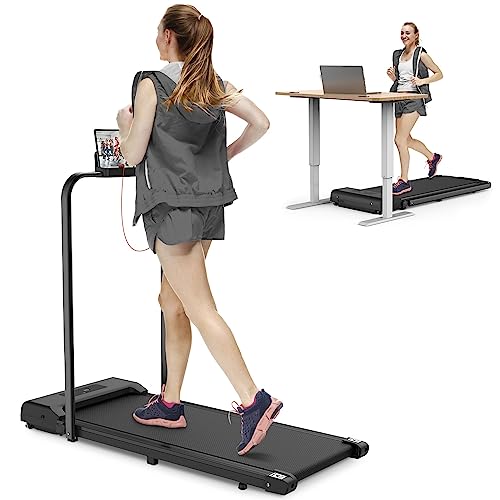
13
JuliWhat's The Job Market For Tread Mill Professionals?
Treadmills: A Comprehensive Guide to Understanding Their Functionality, Benefits, and Appropriate Selection
Intro
Treadmills have actually become a staple in modern fitness regimens, both in homes and health clubs worldwide. They provide a hassle-free and efficient way to keep cardiovascular health, boost endurance, and assist in weight management. This article explores the various types of treadmills, their advantages, features to think about when purchasing, and some FAQs to assist users in making informed choices.
Types of Treadmills
When it concerns selecting a treadmill, it is vital to comprehend the various types readily available in the market. Here are the primary classifications:
1. Manual Treadmills
- Mechanism: These treadmills have a simple style and rely on the user's efforts to move the belt.
- Pros: More budget friendly, quieter operation, no electrical power needed.
- Cons: Limited features, may not supply the exact same variety of exercise intensity.
2. Motorized Treadmills
- Mechanism: Powered by a motor that drives the belt, allowing users to stroll or perform at a set rate.
- Pros: Greater variety of speeds and inclines, geared up with various features such as heart rate monitors and workout programs.
- Cons: More costly and may require more upkeep.
3. Folding Treadmills
- Mechanism: Designed for those with restricted space, these treadmills can be folded for simple storage.
- Pros: Space-saving, often motorized, versatile functions.
- Cons: May be less durable than non-folding models.
4. Business Treadmills
- System: High-quality machines created for usage in gyms and physical fitness centers.
- Pros: Built to withstand heavy use, advanced features, typically consist of warranties.
- Cons: Pricey and not perfect for home usage due to size.
5. Curved Treadmills
- Mechanism: An unique design that enables users to propel the belt using their own energy.
- Pros: Offers a more natural running experience, promotes better running kind.
- Cons: More expensive and can be noisier.
| Treadmill Type | Pros | Cons |
|---|---|---|
| Manual | Inexpensive, no electricity required | Restricted features |
| Motorized | Range of speeds, advanced functions | Maintenance needed |
| Folding | Space-saving, typically motorized | May do not have toughness |
| Commercial | Built to last, professional-grade features | Costly |
| Curved | Natural running experience, promotes good kind | Higher rate |
Benefits of Using Treadmills
Treadmills provide various advantages that can contribute to one's general fitness objectives. A few of these benefits include:
- Convenient Workouts: Treadmills permit users to exercise indoors regardless of weather conditions.
- Cardiovascular Health: Regular use can improve heart health by increasing endurance and promoting healthy blood circulation.
- Weight Management: Effective for burning calories, which aids in weight reduction and management.
- Adjustable Workouts: Users can manage speed, incline, and duration to produce personalized workout experiences.
- Security: Treadmills supply a foreseeable surface area, decreasing the risk of falls compared to outside running.
- Multifunctional: Many treadmills featured features like heart rate monitors, exercise programs, and even home entertainment systems.
Picking the Right Treadmill
When selecting a treadmill, prospective buyers should consider numerous crucial aspects:
Features to Consider:
- Motor Power: Typically measured in horse power (HP), a motor strength of a minimum of 2.5 HP is advised for major runners.
- Belt Size: A longer and broader belt accommodates numerous stride lengths, offering convenience throughout exercises.
- Incline Settings: Adjustable incline features simulate outside hill running and can increase workout strength.
- Weight Capacity: tread Mill Ensure the treadmill can support the user's weight for safety and durability.
- Console Features: Look for easy to use dashboards, exercise programs, and Bluetooth compatibility for streaming music or other functions.
Spending plan Considerations
- Under ₤ 500: Entry-level manual treadmills ideal for casual walkers.
- ₤ 500 - ₤ 1,500: Mid-range motorized treadmills that offer more features and much better sturdiness.
- ₤ 1,500 - ₤ 3,000: High-end models with sophisticated technology, bigger motors, and longer service warranties.
- Over ₤ 3,000: Commercial-grade treadmills perfect for frequent use in health clubs or training facilities.
Often Asked Questions (FAQs)
1. How often should I use a treadmill?
It is advised to use a treadmill a minimum of 3 to 5 times a week, integrating various intensity levels for best results.
2. Can I drop weight by utilizing a treadmill?
Yes, consistent use of a treadmill can add to weight reduction, specifically when integrated with a balanced diet and strength training.
3. What is the very best speed to walk on a treadmill for beginners?
A speed of 3 to 4 miles per hour is an appropriate variety for novices. It's essential to start slow and slowly increase speed as comfort and endurance enhance.
4. Do I require to utilize a treadmill if I already run outdoors?
Using a treadmill can offer fringe benefits, such as controlled environments and varied exercises (incline, periods) that are not constantly possible outdoors.
5. How do I preserve my treadmill?
Regular upkeep consists of lubing the belt, cleaning up the deck and console, and inspecting the motor for ideal efficiency.
Treadmills are essential tools for those seeking to boost their fitness levels in a controlled and hassle-free manner. With different types available, comprehending their features and advantages is vital for making an informed purchase. By thinking about personal workout needs, area availability, and spending plan restrictions, people can find the most ideal treadmill that fits their lifestyle. Incorporating treadmill exercises into a well balanced fitness routine can result in better health outcomes and a pleasurable exercise experience.


Reviews